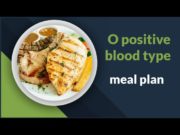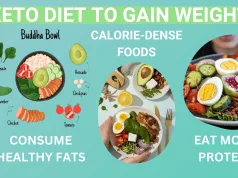How to jump start a diet – How to jumpstart a diet can seem daunting, but it doesn’t have to be. This guide provides a practical roadmap for creating a sustainable plan that aligns with your individual needs and goals. Whether you’re seeking weight loss, improved health, or simply a fresh approach to eating, understanding your starting point, setting realistic goals, and choosing the right diet approach are crucial first steps.
By embracing a holistic approach that incorporates healthy habits, such as regular exercise, adequate sleep, and stress management, you can lay the foundation for lasting success. Remember, consistency is key. Making gradual changes and seeking professional guidance when needed can help you navigate potential roadblocks and maintain motivation along the way.
Understanding Your Starting Point
Before you can start making changes to your diet, it’s crucial to understand where you currently stand. This involves taking a good look at your current eating habits and activity levels. By understanding your starting point, you can set realistic goals and make informed decisions about your dietary journey.
Benefits of Tracking Your Current Diet and Activity Levels
Tracking your current diet and activity levels offers valuable insights into your eating patterns and overall lifestyle. It provides a clear picture of your food intake, portion sizes, and exercise habits. This information is essential for identifying areas for improvement and making informed decisions about your diet.
- Identify areas for improvement: Tracking your diet allows you to pinpoint specific areas where you can make positive changes. For example, you might notice that you consume too many processed foods or sugary drinks.
- Set realistic goals: Understanding your current eating habits helps you set achievable goals. Instead of aiming for drastic changes, you can focus on making small, gradual adjustments that are more sustainable in the long run.
- Monitor progress: Tracking your diet and activity levels enables you to monitor your progress over time. This allows you to see how your changes are affecting your health and motivation.
Creating a Realistic Food Journal
A food journal is a valuable tool for understanding your eating habits and making informed dietary decisions. It involves keeping a record of everything you eat and drink, along with the time of consumption and any associated emotions or situations.
- Choose a method: There are various methods for keeping a food journal, including using a physical notebook, a smartphone app, or a spreadsheet. Choose a method that suits your preferences and lifestyle.
- Record everything: Be thorough in your recording. Include all foods and drinks, even small snacks or beverages. Pay attention to portion sizes and the time of consumption.
- Be honest: Don’t try to sugarcoat or hide anything in your food journal. The goal is to gain an accurate understanding of your eating habits, so be truthful about your choices.
- Include details: In addition to the food itself, record any associated information, such as:
- Emotions: Were you feeling stressed, happy, or bored when you ate?
- Situation: Where were you when you ate? Were you at home, work, or a social gathering?
- Company: Who were you with when you ate?
- Review regularly: Review your food journal regularly, ideally at least once a week. Analyze your eating patterns, identify any trends, and make note of any areas where you can make improvements.
Setting Realistic Goals
When embarking on a diet journey, it’s crucial to set realistic goals that are achievable and sustainable. Setting goals that are too ambitious can lead to frustration and ultimately, giving up. Instead, focus on making gradual changes that you can maintain over the long term.
Short-Term and Long-Term Goals
Short-term goals are stepping stones to your long-term goals. Short-term goals can be as simple as cutting out sugary drinks for a week or incorporating a 30-minute walk into your daily routine. Long-term goals might include reaching a specific weight, lowering your cholesterol, or increasing your energy levels.
The Importance of SMART Goals
Setting SMART goals is a helpful framework for ensuring your goals are attainable and measurable. SMART stands for:
- Specific: Your goals should be clearly defined, leaving no room for ambiguity. For example, instead of saying “I want to eat healthier,” a specific goal would be “I want to eat at least five servings of fruits and vegetables daily.”
- Measurable: You should be able to track your progress toward your goal. This could involve using a food diary, tracking your weight, or measuring your waist circumference.
- Achievable: Your goals should be challenging but attainable. Don’t set yourself up for failure by setting goals that are too ambitious. Start small and gradually increase the difficulty as you progress.
- Relevant: Your goals should align with your overall health and wellness objectives. For instance, if you want to improve your cardiovascular health, a relevant goal might be to reduce your saturated fat intake.
- Time-Bound: Set a deadline for achieving your goals. This will help you stay motivated and on track. For example, you might aim to lose 10 pounds in three months.
Examples of SMART Goals
Here are some examples of SMART goals for different health objectives:
Weight Loss
- Specific: Lose 1-2 pounds per week.
- Measurable: Track weight weekly using a scale.
- Achievable: A healthy weight loss rate is 1-2 pounds per week.
- Relevant: This goal aligns with overall weight management and improved health.
- Time-Bound: Aim to lose 10 pounds in five months.
Improved Health
- Specific: Increase daily fruit and vegetable intake to five servings.
- Measurable: Track intake using a food diary or app.
- Achievable: This is a realistic goal that can be gradually incorporated into your diet.
- Relevant: This goal contributes to improved overall health and reduced risk of chronic diseases.
- Time-Bound: Aim to achieve this goal within two months.
Increased Energy Levels
- Specific: Increase daily water intake to eight glasses.
- Measurable: Track water intake using a water bottle with markings or an app.
- Achievable: This is a simple change that can significantly boost energy levels.
- Relevant: Adequate hydration is essential for optimal energy levels.
- Time-Bound: Aim to achieve this goal within one month.
Choosing the Right Diet Approach
Choosing the right diet approach is crucial for successful weight loss and long-term health. With numerous diets available, it’s essential to understand their principles, pros, and cons to find one that aligns with your individual needs and preferences.
Comparing Popular Diet Approaches, How to jump start a diet
Understanding the key principles, benefits, and drawbacks of popular diet approaches is crucial for making an informed decision. Here’s a comparison of some common approaches:
- Mediterranean Diet: This diet emphasizes plant-based foods, such as fruits, vegetables, whole grains, legumes, and nuts. It includes moderate amounts of fish, poultry, and healthy fats like olive oil. The Mediterranean diet is rich in antioxidants and heart-healthy fats, promoting overall health and reducing the risk of chronic diseases.
- Ketogenic Diet (Keto): The keto diet is a high-fat, low-carbohydrate diet that forces the body to enter a state of ketosis, where it burns fat for energy instead of carbohydrates. It restricts carbohydrates to 20-50 grams per day, focusing on healthy fats like avocados, nuts, and olive oil. While effective for weight loss, the keto diet can lead to side effects like fatigue, headaches, and constipation.
- Intermittent Fasting (IF): IF involves alternating periods of eating and fasting, rather than restricting specific foods. Popular methods include time-restricted feeding (e.g., eating within an 8-hour window) and alternate-day fasting (e.g., fasting every other day). IF can promote weight loss, improve insulin sensitivity, and reduce inflammation. However, it may not be suitable for everyone, especially those with certain medical conditions.
Factors to Consider When Choosing a Diet
When selecting a diet, consider factors like sustainability, nutritional balance, and potential side effects:
- Sustainability: Choose a diet you can stick to long-term. Restrictive diets can be challenging to maintain, leading to yo-yo dieting and weight regain. Look for a diet that incorporates healthy habits you can maintain over time.
- Nutritional Balance: Ensure the diet provides essential nutrients like protein, fiber, vitamins, and minerals. A balanced diet supports overall health and well-being.
- Potential Side Effects: Be aware of potential side effects associated with different diets. Some diets can cause fatigue, headaches, constipation, or other unpleasant symptoms. If you experience any concerning side effects, consult your doctor.
Tips for Identifying a Suitable Diet
Here are some tips to help you find a diet that aligns with your individual needs and preferences:
- Consult a Healthcare Professional: Before starting any new diet, consult your doctor or a registered dietitian. They can help you develop a safe and effective plan based on your medical history and health goals.
- Consider Your Lifestyle: Choose a diet that fits your lifestyle and eating habits. If you travel frequently or have a busy schedule, a more flexible diet might be more suitable.
- Focus on Whole Foods: Prioritize whole, unprocessed foods like fruits, vegetables, whole grains, and lean protein. These foods provide essential nutrients and promote satiety.
- Listen to Your Body: Pay attention to how your body responds to different foods. If you experience digestive issues, fatigue, or other symptoms, adjust your diet accordingly.
- Be Patient and Consistent: Sustainable weight loss takes time and effort. Be patient with yourself and focus on making gradual changes to your eating habits.
Incorporating Healthy Habits
You’ve chosen a diet, set realistic goals, and understand your starting point. Now, it’s time to add healthy habits to your routine to support your weight loss journey and improve your overall health. These habits will complement your diet and help you achieve lasting success.
Regular Exercise
Regular exercise is crucial for weight management and overall well-being. It helps burn calories, build muscle, and improve your metabolism. Even moderate exercise can make a significant difference.
- Cardiovascular Exercise: Aim for at least 150 minutes of moderate-intensity cardio per week, such as brisk walking, jogging, swimming, or cycling. This helps improve heart health, reduce cholesterol levels, and burn calories.
- Strength Training: Include strength training exercises at least twice a week. This helps build muscle mass, which boosts your metabolism and helps you burn more calories even at rest.
- Find Activities You Enjoy: The key to sticking with exercise is finding activities you genuinely enjoy. If you dislike running, try dancing, hiking, or playing a sport. Experiment until you find something that motivates you.
Getting Enough Sleep
Sleep is essential for weight management and overall health. When you don’t get enough sleep, your body produces more of the stress hormone cortisol, which can lead to increased appetite and cravings for unhealthy foods.
- Aim for 7-9 Hours of Sleep: Most adults need around 7-9 hours of sleep per night. Experiment with different sleep durations to find what works best for you.
- Create a Relaxing Bedtime Routine: Wind down an hour or two before bed by taking a warm bath, reading a book, or listening to calming music. This helps signal to your body that it’s time to sleep.
- Make Your Bedroom Sleep-Friendly: Keep your bedroom dark, quiet, and cool. Invest in blackout curtains, a white noise machine, and a comfortable mattress and pillows.
Managing Stress
Stress can lead to unhealthy eating habits and weight gain. When you’re stressed, your body releases cortisol, which can increase your appetite and cravings for sugary and fatty foods.
- Identify Your Stressors: The first step to managing stress is to identify what triggers it. Once you know your stressors, you can start developing coping mechanisms.
- Practice Stress-Relieving Techniques: Techniques like deep breathing exercises, meditation, yoga, or spending time in nature can help reduce stress levels. Find what works best for you.
- Seek Support: If you’re struggling to manage stress on your own, don’t hesitate to reach out for support. Talk to a friend, family member, therapist, or counselor.
Making Sustainable Changes
Making significant lifestyle changes, especially those related to diet, requires a long-term approach. Instead of aiming for immediate, drastic changes, focus on gradual adjustments that are easier to maintain over time. This strategy is key to achieving lasting success and avoiding the common pitfall of rebound weight gain.
Identifying and Addressing Roadblocks
Understanding and proactively addressing potential roadblocks is crucial for successful long-term dietary changes. These roadblocks can vary from person to person and may include:
- Lack of time: Many people struggle to find time for meal planning and preparation, especially with busy schedules.
- Social pressures: Navigating social events and gatherings can be challenging when trying to maintain a healthy diet.
- Emotional eating: Using food to cope with stress, boredom, or other emotions can derail dietary efforts.
- Lack of support: Having a supportive network of friends and family can make a significant difference in maintaining motivation.
To address these roadblocks, consider these strategies:
- Time management: Plan meals in advance, batch cook, or utilize meal delivery services.
- Social navigation: Choose healthier options at social gatherings, bring your own dish, or communicate your dietary needs to others.
- Emotional awareness: Identify triggers for emotional eating and develop healthy coping mechanisms.
- Support systems: Join a support group, find a workout buddy, or enlist the help of a nutritionist.
Maintaining Motivation
Maintaining motivation is essential for long-term success. Here are some strategies to stay on track:
- Set realistic goals: Avoid aiming for overly ambitious changes that can lead to discouragement.
- Focus on progress, not perfection: Celebrate small victories and don’t get discouraged by occasional setbacks.
- Track your progress: Use a food journal, fitness tracker, or other tools to monitor your progress and identify areas for improvement.
- Reward yourself: Recognize your efforts with non-food rewards, such as a new workout outfit or a massage.
- Find enjoyable activities: Incorporate activities you enjoy into your routine, such as cooking, gardening, or spending time outdoors.
- Stay informed: Read books, articles, or blogs about healthy eating and nutrition to stay motivated and learn new tips.
Seeking Professional Guidance

While you can find plenty of resources and information online to help you jumpstart a diet, seeking professional guidance can be invaluable. It’s like having a personal coach to help you navigate the journey and achieve your goals safely and effectively.
Benefits of Consulting a Professional
A registered dietitian or healthcare professional can offer personalized guidance and support, ensuring your diet plan is tailored to your individual needs and health conditions. This is especially crucial if you have any pre-existing medical conditions, allergies, or sensitivities.
- Personalized Nutrition Plans: A professional can create a nutrition plan that aligns with your specific goals, preferences, and lifestyle. They’ll consider factors like your age, activity level, dietary restrictions, and health history.
- Addressing Individual Health Concerns: They can help you understand how diet can impact your health conditions and provide strategies to manage them effectively.
- Safe and Effective Weight Management: A professional can guide you on safe and sustainable weight loss strategies, preventing unhealthy practices and ensuring you’re getting the nutrients you need.
- Motivation and Accountability: Having a professional to check in with can help you stay motivated and accountable for your goals. They can offer support, encouragement, and practical tips to overcome challenges.
Finding Qualified Professionals
Here are some resources to help you find a registered dietitian or healthcare professional in your area:
- Academy of Nutrition and Dietetics: This organization offers a directory of registered dietitians in your area.
- American Medical Association (AMA): You can use the AMA’s physician finder to locate healthcare professionals in your region.
- Your Primary Care Physician: Your doctor can refer you to a qualified dietitian or healthcare professional who specializes in nutrition and weight management.
Last Point
Embarking on a diet journey is a personal endeavor, and there’s no one-size-fits-all solution. By taking the time to understand your individual needs, setting realistic goals, and incorporating healthy habits, you can create a sustainable plan that empowers you to achieve your desired outcomes. Remember, the journey is as important as the destination, so celebrate every milestone and stay committed to your health and well-being.
Top FAQs: How To Jump Start A Diet
What are some common diet pitfalls to avoid?
Common pitfalls include setting unrealistic goals, restricting calories too drastically, and relying solely on fad diets. It’s important to focus on sustainable changes, balanced nutrition, and addressing underlying health concerns.
How can I stay motivated on my diet journey?
Staying motivated requires finding a diet approach that you enjoy and can sustain long-term. It’s also helpful to track your progress, celebrate milestones, and seek support from friends, family, or a healthcare professional.
What if I slip up on my diet?
Don’t be discouraged by occasional setbacks. It’s normal to have slip-ups. Focus on getting back on track as soon as possible and remember that every day is a new opportunity to make healthy choices.
Starting a new diet can be challenging, but it’s important to focus on small, achievable goals. If you’re looking to lower your blood pressure, you might want to explore the best diet to lower blood pressure. This can involve cutting back on processed foods and increasing your intake of fruits, vegetables, and whole grains.
Remember, consistency is key, so start with simple changes and gradually build from there.
Jumping into a new diet can be daunting, but it’s easier when you focus on small, achievable changes. Start by cutting out sugary drinks and processed foods, and try incorporating more fruits and vegetables into your meals. If you’re looking for budget-friendly options, check out cheap diets to lose weight.
Remember, consistency is key, so focus on making sustainable changes you can maintain over the long term.
Jumpstarting a diet can be challenging, but focusing on nutrient-rich foods is a great place to start. A key nutrient to consider is iron, which is vital for energy levels and overall health. You can learn more about incorporating iron into your diet by checking out this helpful resource: how to add iron to diet.
Once you’ve got your iron intake on track, you can start exploring other dietary changes to support your health goals.
























